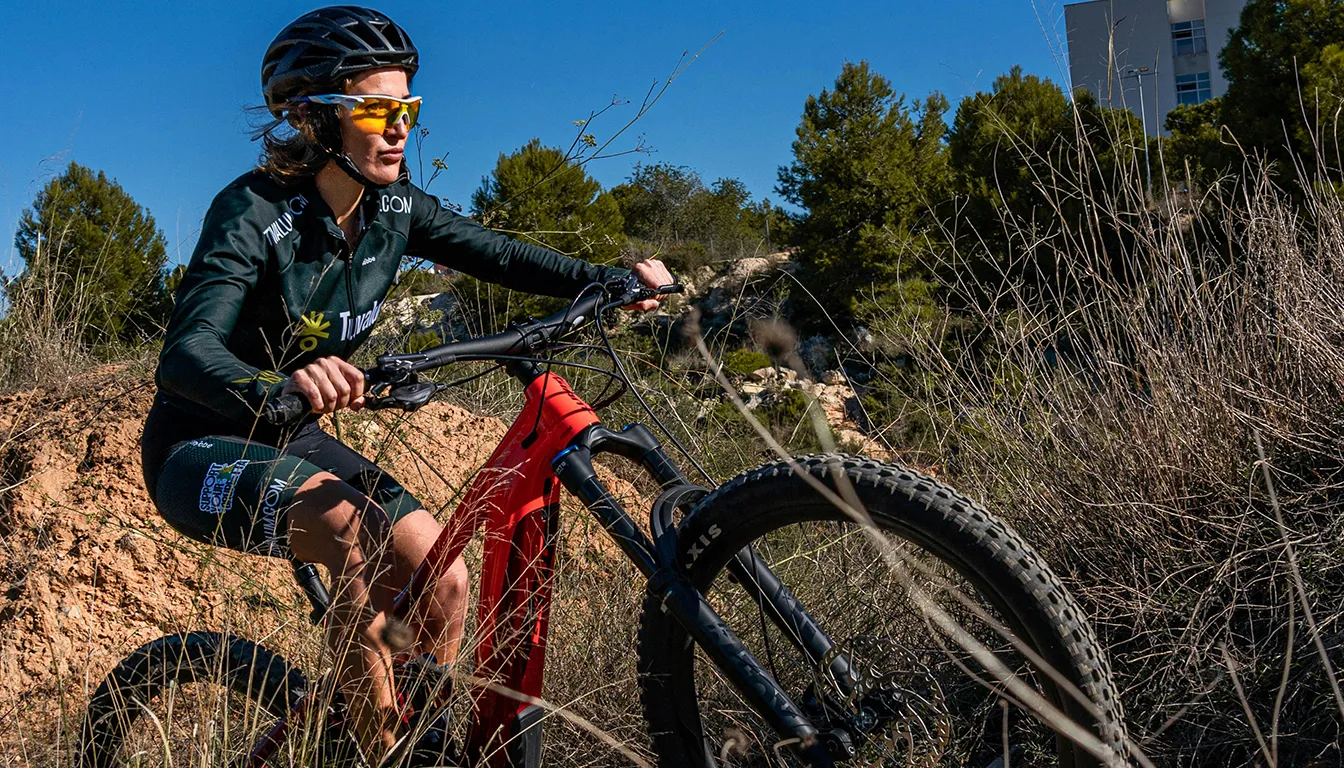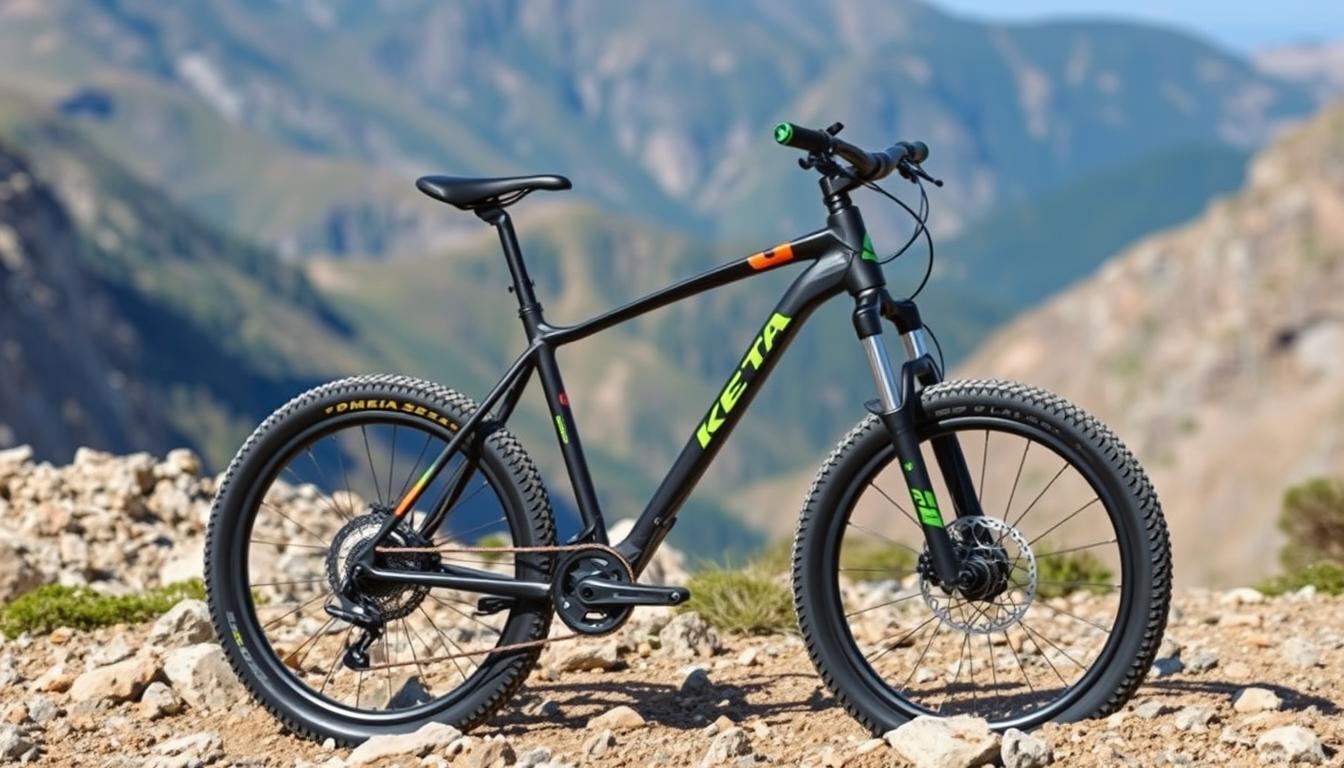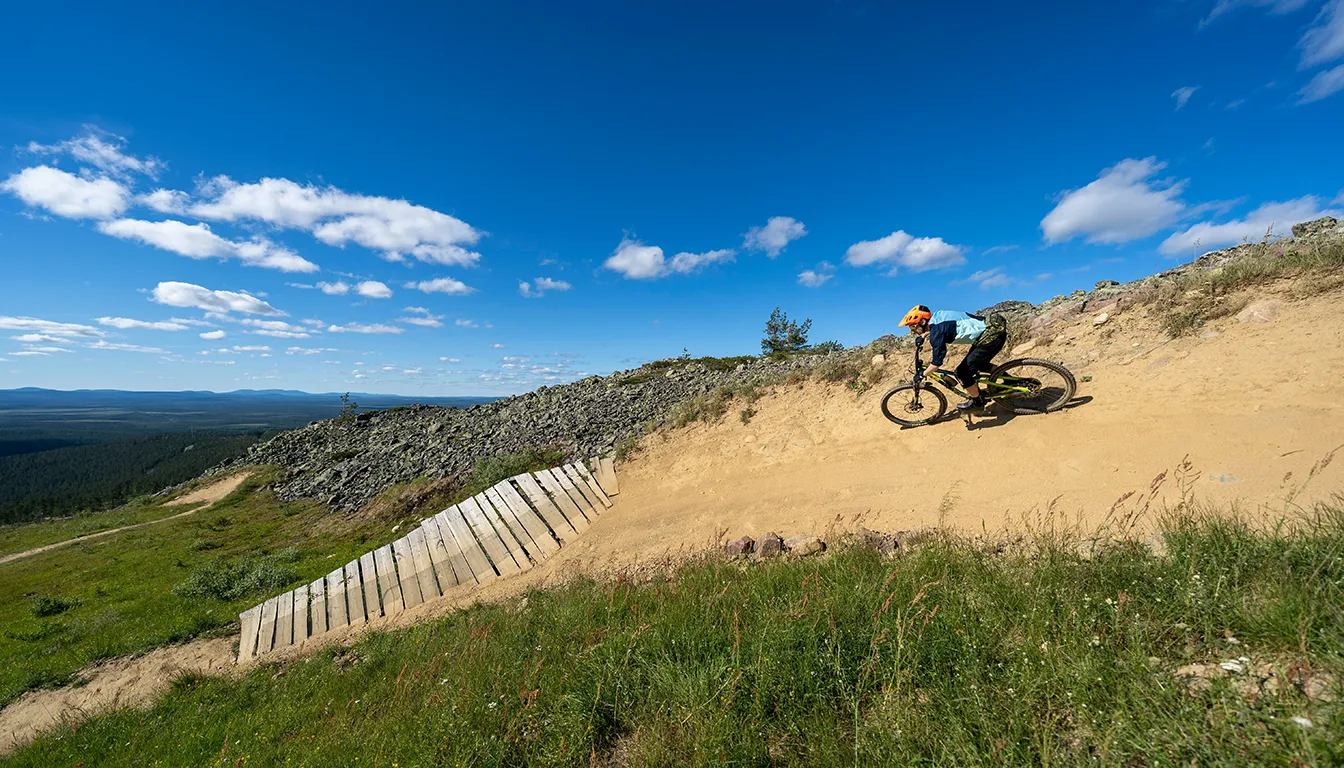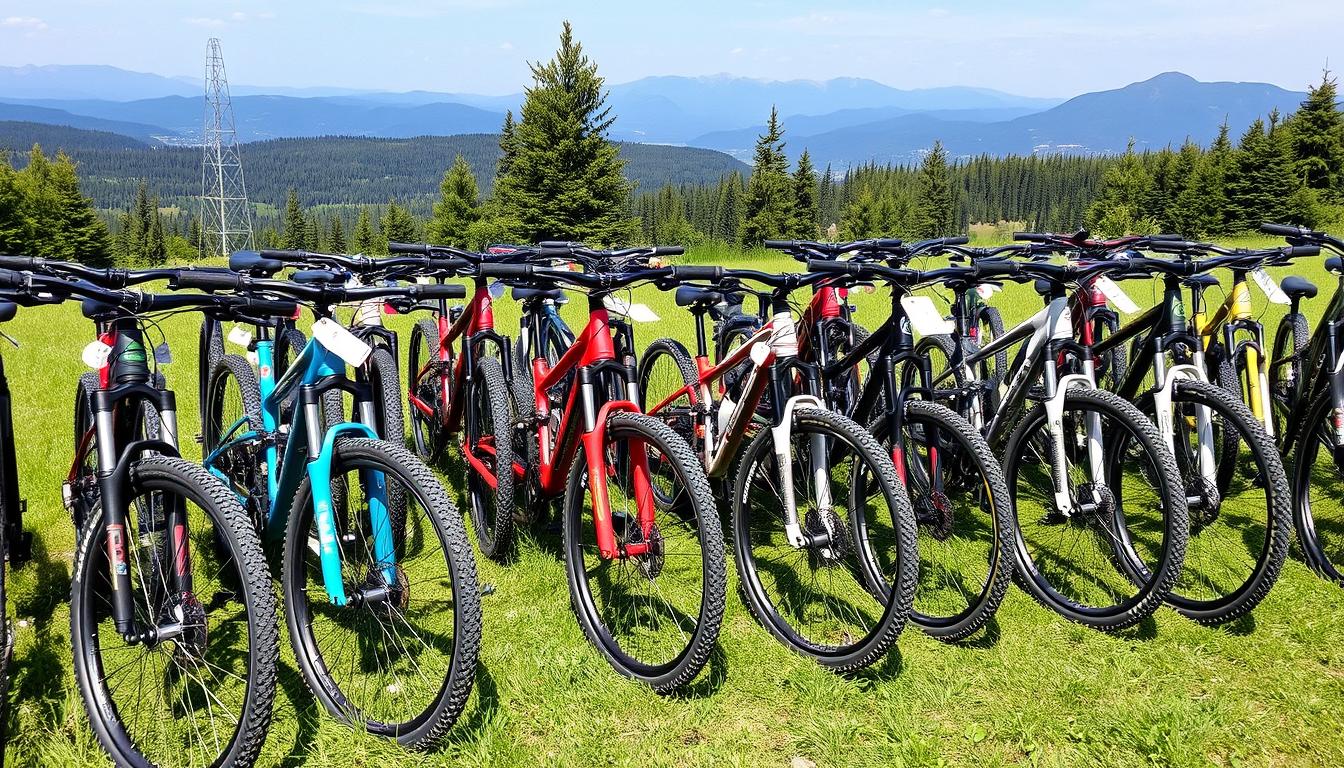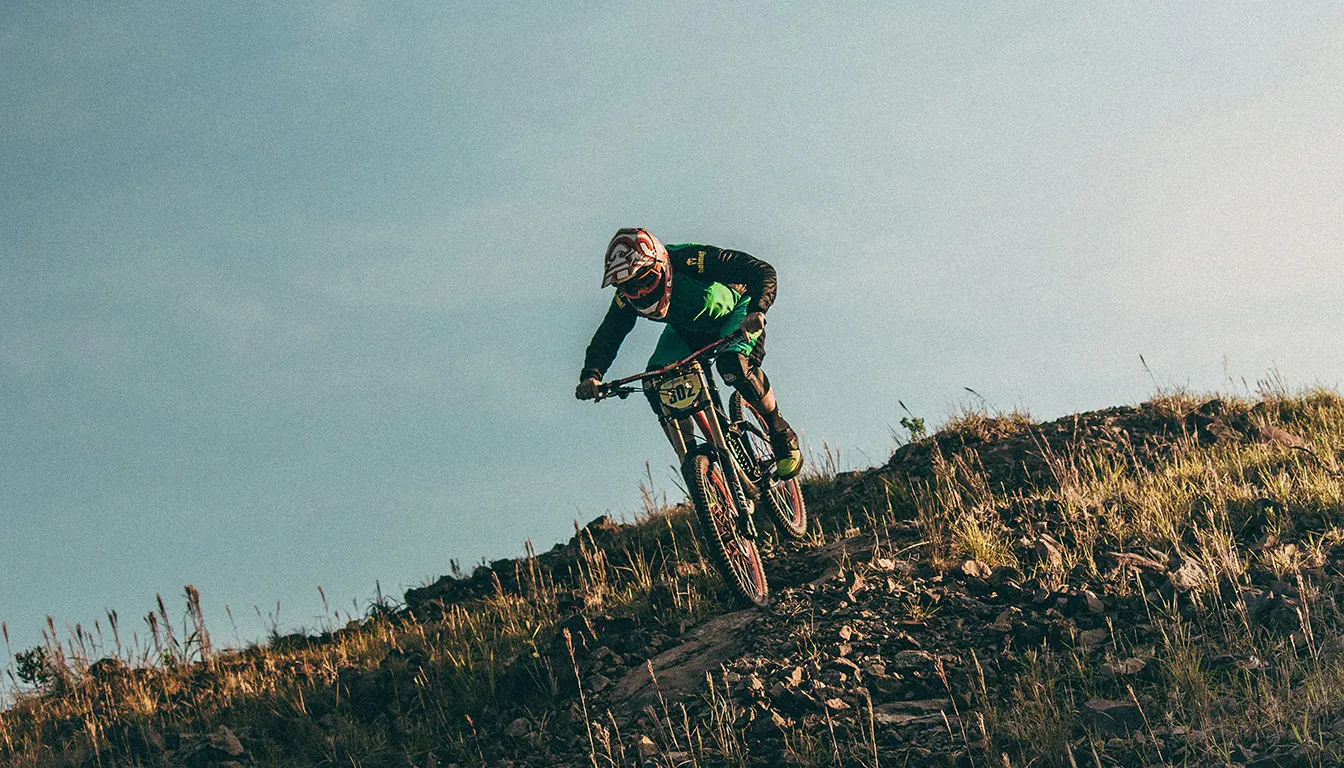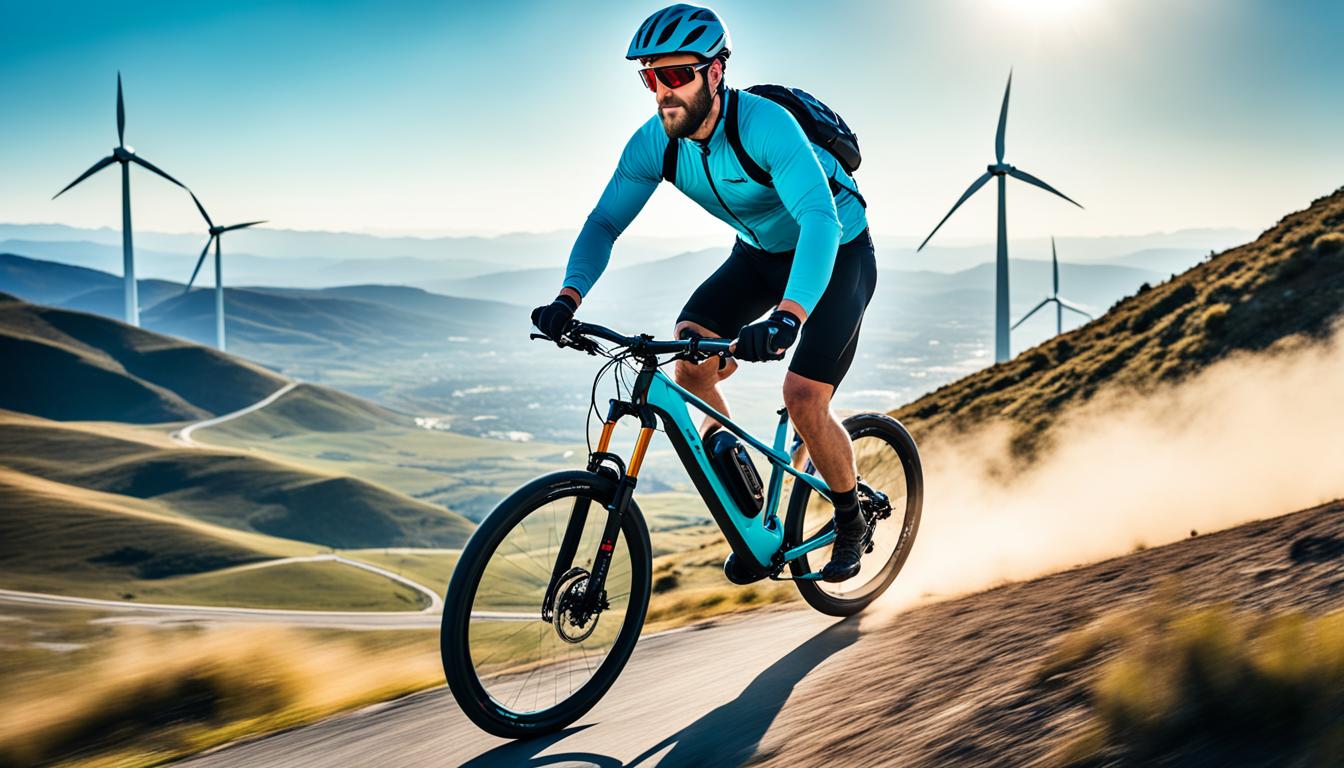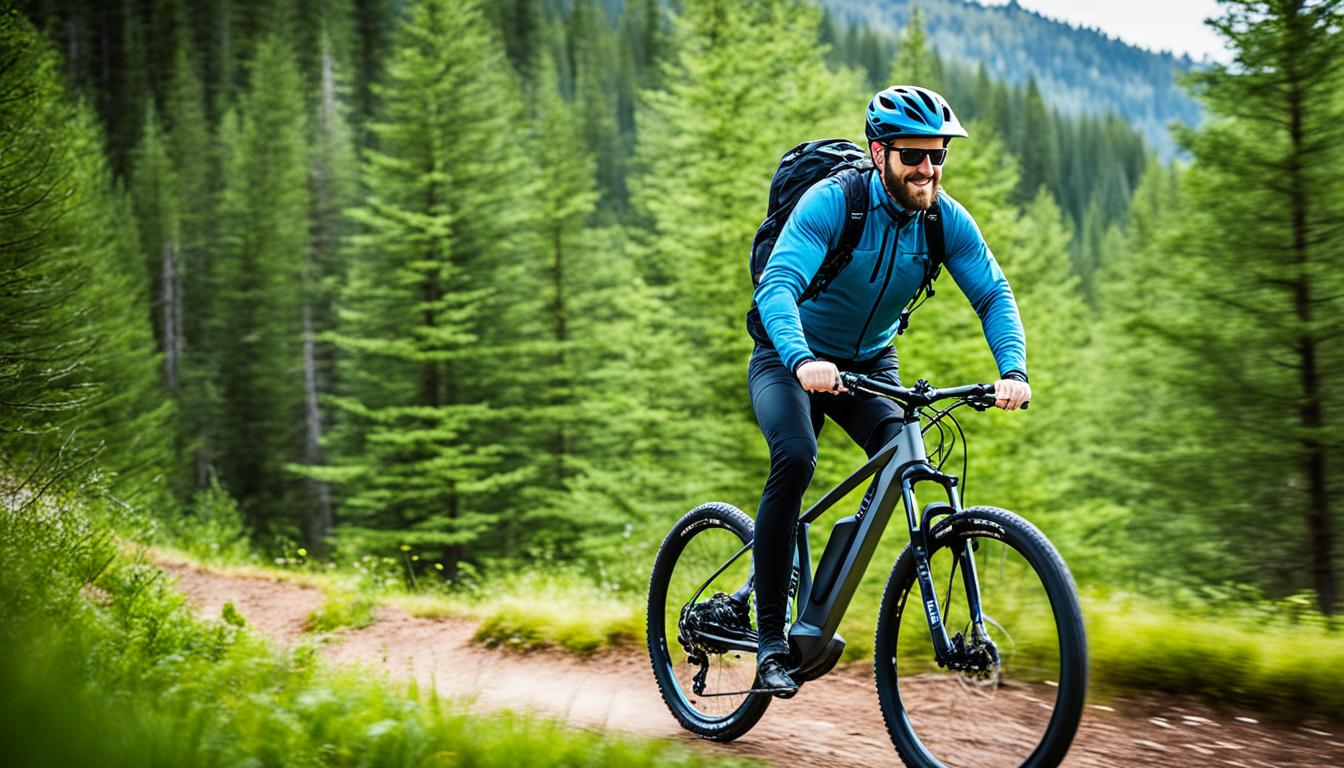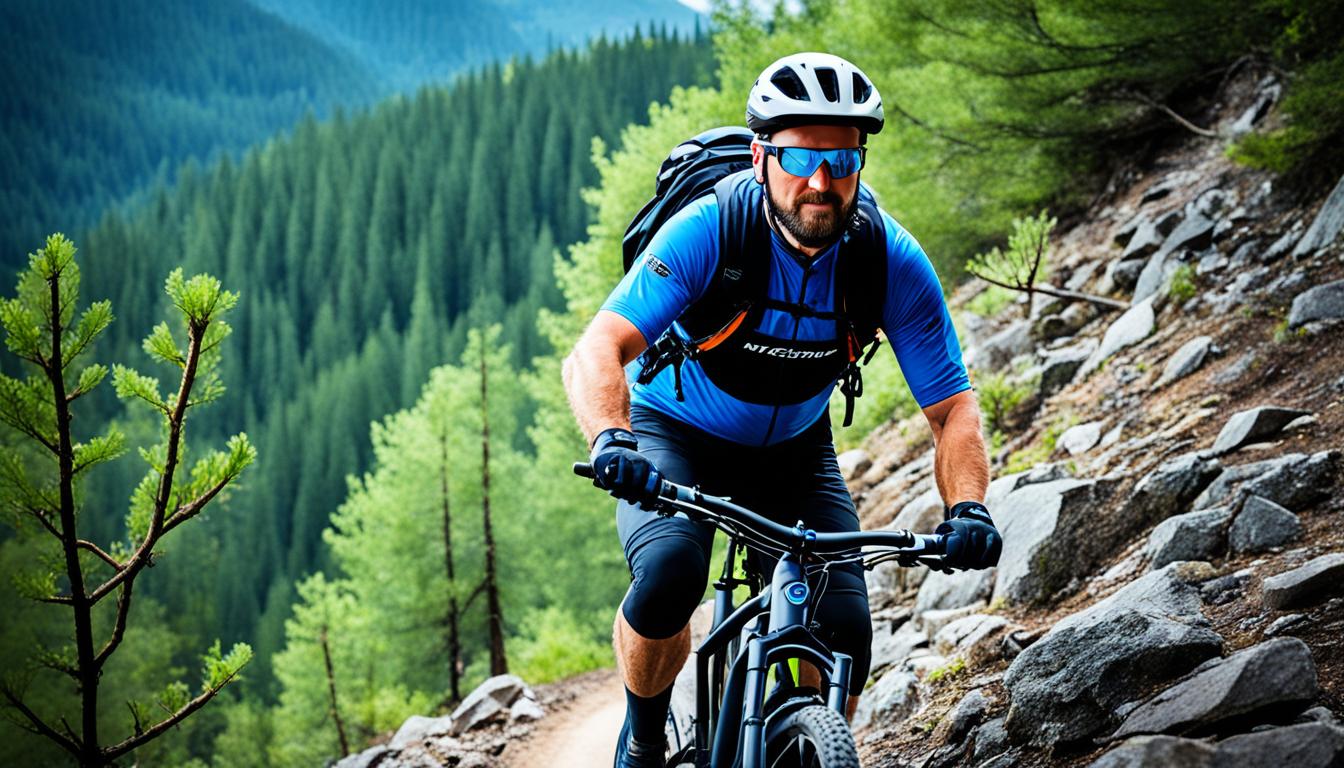Mountain biking on an e-bike is a unique experience. It’s different from traditional biking. E-bikes let riders cover more distance, exploring new terrains easily. This means you can go on adventures that were once too hard to reach.
E-bikes have an added advantage because they’re heavier. This weight helps with better grip on rough paths. It makes steering through tricky trails easier, giving you more control. Plus, the extra weight makes going around corners smoother. But to get the most out of your e-bike, you need to learn some important tips.
We will look at useful tips for e-biking in the mountains. These tips can make your ride better, faster, and safer. Knowing how to use your e-bike’s power and keeping the battery going are key. These strategies will greatly improve your biking experience. For tips on choosing the right E-Bike, read this detailed guide.
Understanding the Power of E-Bikes
Electric mountain bikes (eMTBs) change how we ride, making tough landscapes easier to handle. E-bike tech includes electric motors and batteries that help with pedalling. They are a big help on steep or rough paths.
E-MTBs are heavier than normal bikes, with some as light as 14 kg. They can travel 50 to 100 miles on a single charge, depending on the terrain and how much you pedal. Knowing how the power system works helps to get the most from your eMTB.
eMTBs offer different levels of help for various riding conditions. For example, Shimano’s EP8 system has modes like Eco, Trail, and Boost. The assistance stops at speeds over 15.5 mph in the UK. This is to help keep a good pace, not just a fast top speed. Battery charging takes 3 to 10 hours, with many places to charge up across the UK.
- Electric mountain bikes feature robust suspensions for managing rocky terrains.
- These bikes come equipped with fat tires, balancing agility and stability.
- High-quality shock absorbers enhance comfort on uneven surfaces.
- E-MTBs foster inclusivity, inviting more enthusiasts to engage in mountain biking.
Understanding your electric mountain bike’s features and how it works can improve your rides greatly. Embracing e-bike technology not only uplifts your performance but also increases the fun on each journey.
Get Familiar with Your E-Bike’s Support Modes
Understanding your e-bike is key to better mountain biking adventures. E-bike support modes differ by model and change how you ride. It’s important for riders to try these modes out. This helps find the best setting for different situations. Most e-bikes have three to six pedal assist levels, suiting various landscapes and riding styles.
Different Assist Levels Explained
Pedal assist levels include Eco, Trail, and Boost. Each has its own use. Eco mode is great for easy rides and saving battery power. Boost mode helps on steep hills, giving you a lot of power. Bikes like the Micargi Storm and Emojo Wildcat Pro HD 750 have smart-assist. This adjusts support based on the terrain and how hard the rider is working. Knowing these features lets riders adjust their experience better.
Choosing the Right Mode for Your Ride
Choosing the best mode depends on the terrain, weather, and your fitness. For easy, flat rides, use low assist. But, for steep hills, you might need more help. Caroline Washam recommends starting with a moderate setting, like two or three out of five. This keeps the ride controlled but still requires effort. Remember, using high support modes uses more battery. This is crucial for planning long rides. For tips on enjoying your e-MTB more, check this informative guide.
Minding the Weight: Adjusting Your Braking Technique
Riding an e-bike on mountains has its own challenges because they’re heavier. You need to pay more attention to how you brake. This makes sure you stay steady and in control, no matter the terrain. Managing how much weight you put into your brakes is crucial for smooth rides, especially when turning or going downhill.
Braking Earlier for Better Control
Start braking before you reach corners to keep better control. Remember, the front brake stops you more effectively than the back one. Using the right braking method on your e-bike helps you stay balanced and prevents sliding. This way, you can turn corners more smoothly. Try braking early before a curve to keep your grip.
Positioning Yourself on the Bike
How you sit on your bike is very important for handling weight. Adjust your posture to keep a low centre of gravity, especially when you’re going downhill. If you lean back a bit while braking, it spreads your weight better. This improves how you handle the e-bike. Learning these tips will make you more confident and quick to react on tough rides. To get better at braking, check out this resource on braking techniques.
e-Bike Mountain Biking Tips: Shifting is Still Essential
E-bike power doesn’t eliminate the need for skill in shifting. Getting the right gear selection helps you move smoothly over different terrains. It also makes your ride smoother by managing how fast you pedal. Knowing when and how to shift gears improves your biking and makes it more fun.
The Importance of Gear Selection
Using the right gears helps a lot when you’re climbing. As you face steeper climbs, shift to lighter gears to keep going without losing speed. This approach helps you tackle tough parts more easily and keeps your bike in good shape. It makes e-biking similar to regular mountain biking, where knowing when to shift is key.
Maintaining Consistent Cadence for Performance
Keeping a steady pace in pedalling is key for the best power use and efficiency. Good cadence management means smoother rides and better battery use. This steady pace matches perfectly with the e-bike’s power, offering an enjoyable ride without extra effort. Aim for a natural pedalling rhythm and shift gears smoothly to keep your ride fluid.
Managing Battery Life While Riding
Effective e-bike battery management keeps your adventure going and ensures smooth rides. Knowing that high assist drains the battery fast, smart riders choose wisely when to use it. They use more power on tough climbs and less on the way down to save energy.
Power Modes and Battery Drain
Knowing how different power modes affect battery life is key. The middle assist setting works well for most terrains and keeps the battery from running out too quickly. It’s also vital to keep an eye on your battery level to avoid surprises and ensure you always have enough power. For more information on how to setup your E-Bike for optimal performance, read this guide.
Strategic Planning for Longer Rides
Smart ride planning can improve your eMTB journey. Picking paths that avoid steep hills can protect your battery. Keeping your e-bike in top condition is equally important for its range.
Carrying an extra charged battery for long rides is a good idea. Or, plan for places to charge along the way. This prevents battery issues. For more tips on mountain biking, check out this article.
FAQ
What is an eMTB and how is it different from a traditional mountain bike?
An eMTB, or electric mountain bike, comes with a motor and a battery. This setup helps you pedal easier. You can climb steep hills more smoothly than on traditional bikes. So, you can enjoy longer trips without getting as tired.
How do I choose the right support mode for my eMTB?
eMTBs have different levels of help, like Eco, Trail, and Boost. Use Eco for level paths and Boost for sharp climbs. Trying out these modes as per your path will make your ride better.
What should I do to manage my e-bike’s battery life?
To save battery, use high assist modes for uphill and low modes for downhill. Keep an eye on the battery. Planning your route with the terrain in mind ensures you won’t lose power unexpectedly.
Are there specific braking techniques I should be aware of when riding an eMTB?
Yes, eMTBs weigh more, so you need to start braking sooner than on regular bikes. Early braking helps with control, especially in turns. Learning how to brake properly keeps you stable.
Why is gear selection still important when riding an eMTB?
Choosing the right gear helps with climbing and keeping a good grip, even with pedal assist. Shift to lighter gears for steep parts to avoid stopping. Keeping your pedalling steady is good for the battery.
How do e-bike power systems work?
Power systems like Shimano’s EP8 change the motor’s help based on how you ride and the landscape. Getting to know these systems helps you get the most from your eMTB.
How do I position myself on an eMTB for better handling?
For better handling, spread your weight right to stay in control and stable, mainly when going downhill. This balances the eMTB’s extra weight.
